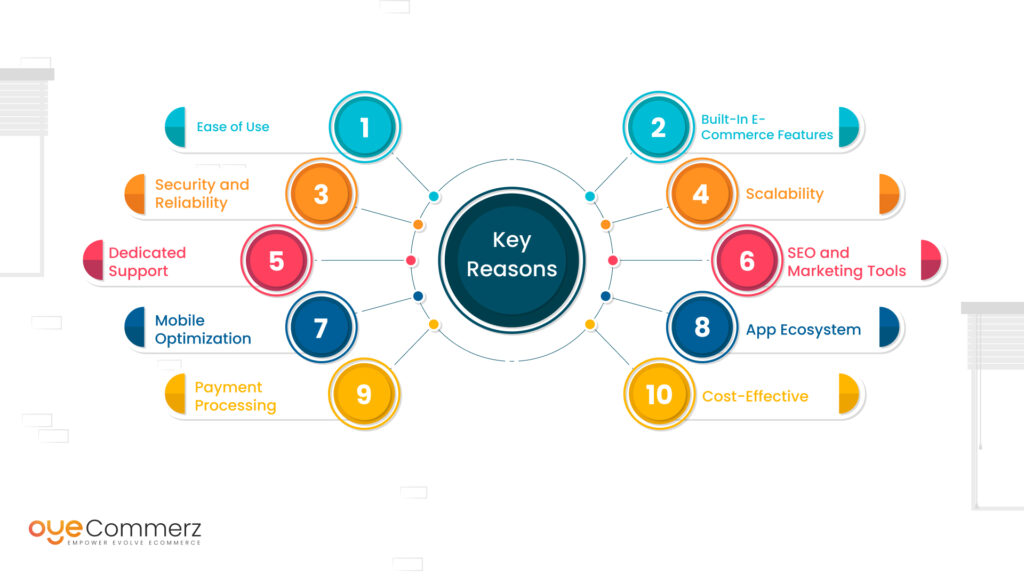Shifting from WordPress to Shopify is an exciting step in streamlining your e-commerce processes. As companies grow, selecting a solution that aligns with scalability, UX, and customization is essential. Shopify is widely recognized as a favorite for e-commerce professionals, providing superior flexibility, data protection, and ease of use. In this guide, we’ll explore the transformative impact of this migration, highlight the benefits, and provide actionable steps to ensure a seamless transition.
1. Why Switch from WordPress to Shopify?
WordPress, paired with WooCommerce, continues to support countless online stores. Nevertheless, as companies expand, challenges like plugin dependency, security vulnerabilities, and technical complexities often obstruct growth. Shopify, designed explicitly for digital retail, addresses these concerns with an comprehensive, user-friendly solution. Statistics back this shift—Shopify hosts over 4.4 million stores worldwide, with a reported 10% increase in sales performance for numerous merchants post-switch.
2. Key Benefits of Shopify for E-commerce Success
Shopify’s powerful platform is tailored for expanding businesses. Its standout benefits include:
- Seamless Customization: Shopify offers over 80 expertly crafted themes.
- Integrated Tools: Features like Shopify Payments and built-in SEO save time and effort.
- International Expansion: Multi-currency support and localization features empower businesses to expand internationally.
Additionally, Shopify boasts an availability percentage of 99.98%, ensuring your store remains accessible.
3. Getting Ready for Your WordPress-to-Shopify Transition
Prior to starting the migration process, assess your current store. Review product data, customer details, and search engine rankings. Resources such as Shopify’s Migration Kit or third-party solutions can simplify this process. Create a comprehensive plan, making sure all resources—product descriptions, images, and articles—are ready for seamless import.
4. Data Migration: A Critical Step
Data migration forms the foundation for a successful transition. When migrating from WP to Shopify, prioritize:
- Product Information: SKU, descriptions, and categories.
- Client Information: Emails, purchase records, and custom fields.
- Search Engine Considerations: Preserve meta tags, URLs, and redirects to maintain search rankings.
Leverage apps like LitExtension to facilitate seamless migration while minimizing errors.
5. Tailoring Your Shopify Store to Fit Your Brand
Post-migration, personalizing your Shopify store ensures it aligns with your business identity. Utilize Shopify’s intuitive page builder to design pages effortlessly. Shopify's templates are mobile-responsive, providing a smooth user experience across platforms—a key point, since 74% of online shopping Shopify migration tools is generated by mobile visitors.
6. Maintaining SEO During Migration
SEO is vital for preserving your online presence during migration. Shopify is highly optimized for search engines with organized link formatting, built-in optimization tools, and smooth content management. Ensure:
- Implement 301 redirects for existing links.
- Optimize new pages with targeted phrases.
- Use Shopify's apps Plug in SEO to monitor performance after the switch.
7. Post-Migration Testing
After finishing the transfer, run detailed checks.
Review: - Page load times (Shopify boasts faster speeds in contrast with WordPress).
- Functionality of payment gateways and transaction flow.
- Adaptability across devices.
Testing ensures your store delivers a smooth shopping experience from day one.
8. Real-Life Success Story
An example of effective platform switching is Gymshark, a fitness apparel brand that transitioned to Shopify. After the switch, the company experienced a 60% boost in mobile sales and significantly lowered site downtime. This showcases the potential of Shopify in driving online business success.
9. Overcoming Common Migration Issues
Migration is not without obstacles, such as data integrity and reconfiguring custom functionalities. However, Shopify’s extensive assistance and third-party experts simplify the process. Partnering with experienced Shopify developers ensures a trouble-free transition.
10. Making the Switch: The First Step Toward Success
Switching from WordPress to Shopify represents a strategic approach to e-commerce. By focusing on growth, simplifying management, and improving buyer satisfaction, Shopify enables companies to thrive in competitive markets.
Conclusion
Transitioning from WordPress to Shopify is a strategic move that can significantly boost your e-commerce success. With a well-structured Migrate from WordPress to Shopify strategy, the right tools, and expert support, you can achieve new growth opportunities.
Ready to make the leap? Reach out today to learn how our Shopify migration services can revolutionize your online store. Contact us now, or ask yourself: Can your business afford to miss out on Shopify’s growth potential?
